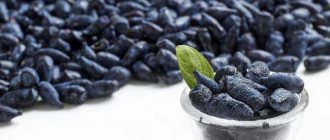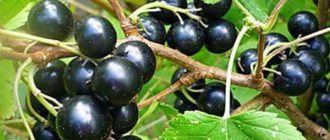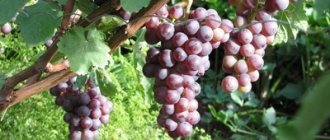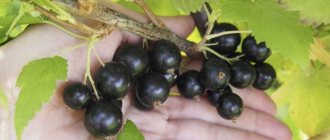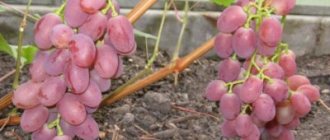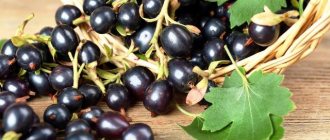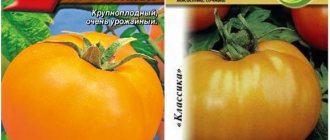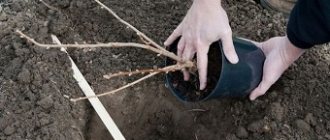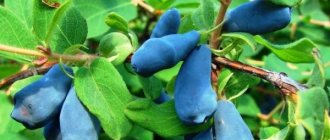What varieties are there?
Universal varieties with thick skin and dry tear-off are best suited for freezing.
In Russia and the CIS countries, currant varieties bred by domestic breeders and experimental farms are common. Their names have no Latin equivalents.
Depending on the period of fruiting, varieties are distinguished:
- early (from June 20)
- medium (from July 1 to July 15)
- mid-late and late (from July 20 to the end of August)
The amount of sugar and ascorbic acid (vitamin C) contained in the berries determines whether the species belongs to:
- sweet
- sour
- sweet and sour
Depending on the purpose of the plant type, there are:
- Dessert varieties. They can be consumed as an independent dish; their tasting score exceeds 4.5.
- Universal varieties. It is recommended to make jams, freeze or eat in its natural form.
An important characteristic of the species is considered to be immunity to unfavorable growing conditions (weather, moisture deficiency, the harmful effects of insects, viruses and infections).
The following types are distinguished:
- drought-resistant
- frost-resistant
- resistant to pests (bud mite)
- resistant to diseases (anthracnose, rust, terry, gray rot, powdery mildew)
Early varieties
The summer resident produces a small harvest, but the berries are sweet and large
Early varieties of berries begin to bloom in early May, and the first harvest occurs at the end of June. If you want to enjoy a sweet berry at the beginning of summer, then you should take a closer look at the species: Summer Resident, Zest, Curiosity, Exotic, Heiress.
Exotic
Exotic
- The harvest can be harvested at the end of June - beginning of July.
- Fruits weighing up to 3 g (the largest fruited type among the early ones), sweet (9% sugar), thin-skinned, with a dry detachment.
- The shrub rarely reaches a height of more than 1.5 m, has the characteristics of self- and precocity, winter hardiness and drought resistance.
- It resists columnar rust well, but is weak to terry rust.
Summer resident
Summer resident
- Gardeners value this variety for its very compact size - the shrub rarely exceeds 90–100 cm in height, and early fruiting in early July.
- The fruits are sweet and quite large for a universal variety - their weight is 4 g, but it is unlikely that you will be able to harvest a large harvest with only 1 bush.
- The maximum yield of the species is only 1.5 kg, and it requires special attention: installing supports under the branches.
- It is important to remember about the timely collection of fruits, which ripen at different times, but quickly fall off.
Highlight
Highlight
- Ripens in early July, the bush is very compact and medium-sized.
- The yield, as well as the mass of berries, is small, but this disadvantage is offset by excellent characteristics of resistance to adverse conditions.
- The only disadvantage of the variety lies in the difficulties with its propagation by cuttings.
If the gardener does not have time to harvest often, then it is better to plant drought-resistant varieties. The berries do not fall on them too quickly.
How to trim currants (video)
Immediately before you start planting, it is allowed to till the soil with a plow, but when plowing, turning out the podzol is unacceptable. Per hundred square meters you need to add 8-10 kg of phosphate rock, 2 kg of potassium and 400-600 kg of manure.
Planting is usually done in the fall, but it can also be done in the spring. If the soil meets the above requirements, place stakes to define the rows. The distance between the bushes should be 0.6-1.5 m, between the rows - 1.87-2.5 m. After you water the soil, you will need to mulch it with a layer of peat, the thickness of which should be 3-5 cm.
Don't forget to hill the currants if you planted them in the fall. With the arrival of spring, when the soil dries out, you need to loosen it around the bushes to a depth of 8-10 cm and then mulch. The mulch itself, which can be made from peat, manure or compost, should be spread in a layer of 8 cm. This helps to enhance the growth of berries.
In rows, loosening and cultivation should be done deeper than in bushes, by 10-12 cm. We also draw your attention to the need to hoe the soil 4 times during the season. The first time this is done is in early spring in order to seal off moisture and incorporate fertilizers. The second time - during the period of active growth, the third - after harvesting, and the fourth time it is necessary to carry out winter loosening, intended for incorporation of fertilizers.
Watering your plantings should be done 2-3 times. This must be done during the period of active growth, as well as after you have harvested. As soon as the watering is done, the row spacing needs to be cultivated.
Do not close your eyes to the topography of the soil, it greatly affects the final result.
How well your currant will grow depends to a large extent on how its roots are nourished. And keep in mind that you must do everything to prevent the soil from becoming soggy. Weeds and sods will take nutrients from the roots, and this will lead to the shedding of leaves before leaf fall begins, inhibition of growth, weakening of root shoots, and will also reduce resistance to pests and diseases.
If you fertilize the soil annually, you need to add 5-7 kg of manure or compost for each bush. It is recommended to do this in the fall. In the first year, 8-10 kg of manure is required. On the second you need to add 100-150 g of berry mixture with phosphorus - mineral fertilizers. The amount of manure in the third year should remain the same, and phosphorus is not required. In the fourth and fifth years, on the contrary, no manure is required. Instead, 250-300 g of mineral fertilizers are applied. It is recommended that the amount of minerals in the fourth year exceed the same amount in the fifth by 1.5 times. In the sixth year, fertilization is done using 8-10 kg of manure and 150-180 g of minerals. In the seventh and eighth years, manure should again be eliminated and only minerals should be used. Each bush requires 250 g. And finally, in the ninth year, you need to fertilize the currants with manure and add 150-180 g of minerals.
Medium varieties
Titania is a variety with large fruits that fully ripen in mid-July - early August
Fruiting occurs on July 15–20. The most popular varieties of the plant are considered to be: Black Pearl, Perun, Fidelity, Dubrovskaya, Green Haze, Smuglyanka, Titania.
Black Pearl
Black Pearl
- The first berries appear on the bushes in mid-summer, quite small (weighing up to 2 g), with a pleasant sweet and sour taste, they are easy to pick due to their uniform size and transported over long distances.
- Fruit racemes can reach 7 cm in length.
- The plant itself does not grow higher than 150–160 cm, is endowed with the properties of frost resistance, self-fertility and produces a yield of up to 4–5 kg of fruits per bush.
- It is recommended to spray this variety in a timely manner against powdery mildew.
Dubrovskaya
Dubrovskaya
- The medium-sized berries of this species ripen by mid-July, they are sweet, and they are convenient to pick because the bush is low-growing, not exceeding 100–120 cm in height.
- There is quite a lot of harvest - about 3 kg per season can be collected from 1 bush.
- The variety is not afraid of terry, but treatment against bud mites must be carried out regularly.
Titania
Titania
- In the first weeks of July, the first berries appear on the thick vertical shoots of the bush.
- The fruits have a noticeable sourness in taste, are not one-dimensional, with thick skin and green pulp.
- Maturation does not occur simultaneously.
- The variety is self-fertile and shows high resistance to powdery mildew.
By choosing a variety with non-simultaneous ripening of berries, you can extend the harvest period. However, you need to ensure that ripe fruits do not begin to crumble. You can lay oilcloth or fabric under the bush.
Description of the grape variety
This species is large-fruited, with a compact, upright and weakly branched bush. It resists pests and powdery mildew well, and in the first year it will delight the gardener with high yields. If you want to achieve the best performance from it, you should carry out enhanced agricultural technology.
You also shouldn’t forget about such an unpleasant thing as drought. And this variety of currant is very resistant to it, as well as to winter. The kidney mite is not interested in it, and there is a fairly high immunity to major diseases. Such currants will look good in the garden because they are spreading.
The leaves, in accordance with the name, are similar to grapes, and the harvest, which reaches up to 6 kg per bush, must be harvested at the same time. This variety was obtained at the St. Petersburg State Agrarian University, and such currants are grown in the Volga-Vyatka region. This was achieved by crossing the Pamyat Michurin variety with Chaika. Its shoots are erect, and the berries themselves have a taste that can only be called dessert. The fruit detachment of the variety is wet.
The sweetest varieties
The sweetness of the berry depends on the ratio of fructose and ascorbic acid in its composition
If the fructose content in currant berries exceeds 10%, then the variety is classified as sweet (Cardinal, Chernyavka, Delicatessen), and if it contains less than 9% sugar, it is classified as sour. Those fruits whose sweetness is intermediate are called sweet and sour (Ladushka, Temptation).
Nina
Nina
- An early species with large (up to 4 g) fruits, yields up to 8 kg with proper care.
- Sugar content from 9 to 11%, a lot of ascorbic acid
- A self-fertile winter-hardy variety that is easily propagated vegetatively, but is prone to doubleness.
- The main disadvantage is that the thin skin is quickly damaged, so transporting the berries is problematic.
[/wpsm_list]
Green haze
Green haze
- The shoots are erect, spreading, the fruits ripen in the last days of July.
- The aromatic berries of this medium variety are small but sweet: the sugar content is almost 12%.
- Self-fertile and resistant to low temperatures, the shrub produces about 5 kg of yield, but is susceptible to infection with bud mites.
Bagheera
Bagheera
- A distinctive feature of the variety is the almost simultaneous ripening of berries of the same size (weighing up to 2–3 g), which do not fall off for a long time and can withstand long-term transportation.
- The shrub is able to withstand drought, low and extremely high temperatures, and pest invasion, but cannot withstand powdery mildew and anthracnose.
- 100 g of fruits of this variety contain on average 170–180 mg of vitamin C, and slightly less than 12% sugar.
Black BMW
Black BMW
- Developed as a result of crossing the sweet varieties Chudesnitsa and Selechenskaya 2.
- It is characterized by berries up to 7 g, with a pronounced sweet taste at the ripe stage.
- The bush is straight-trunked, but under the weight of the harvest it can begin to creep along the ground, so the shoots are tied up during the fruiting period.
The sweetest types of currants are: Otlichitsa (contains 11% sugar) and Triton (10.6% fructose).
The best varieties of black currants
It is difficult to choose the most suitable one for your site from more than two hundred varieties of black currant. There are the largest-fruited, productive, early, sweet ones - it’s worth trying all the best that was bred by domestic and foreign breeders.
How to choose currants for planting on the site
When selecting a variety, you must consider the following:
- how drought-resistant it is;
- how adapted to frost and temperature changes;
- period of flowering and fruit harvest;
- is it demanding of care?
- How strong is your immunity to pests and diseases?
Correlate the characteristics of the variety with the temperature regime of your region, soil fertility and other features of your area and site, and then evaluate it according to your personal preferences:
- what kind of currants do you prefer to taste: sweeter or with bright sourness;
- will your crop be transported? To do this, it is important to know the thickness of the fruit peel and peel dryness indicators.
The largest fruited varieties
When one blackcurrant berry weighs more than 1.5 g, the variety is classified as large-fruited. Some of these varieties are also frost-resistant, easily adapting to heat and low humidity.
Vigorous
Elite large-fruited currant variety. The weight of the berries reaches 8 g. The Yadrenaya harvest ripens at the end of July, about 6 kg is collected from each bush. The advantages of the variety include:
- dense and elastic pulp;
- self-pollinating;
- stable immunity to kidney mites.
Gardeners also note significant disadvantages of Yadrenaya:
- high requirements for care, systematic pruning;
- the need to renew the plant every 5–7 years;
- non-one-dimensional berries on the brush;
- impossibility of transporting fruits;
- sour taste of berries;
- susceptibility to powdery mildew.
The black currant variety Yadryonaya is popular due to the large size of the berries.
Dobrynya
The weight of the largest berries of the variety is 7 g. By mid-May, currants bloom, harvesting begins after July 15. One bush can produce more than 2 kg of berries. The undeniable advantages of Dobrynya, in addition to this, include:
- dry separation of fruits, as well as their dense peel. These features are important for ease of transportation;
- pleasant aroma;
- sweet and sour aftertaste;
- plant immunity to powdery mildew.
Disadvantages of the variety:
- young cuttings take root poorly;
- demanding of soil care and fertility;
- affected by kidney mites;
- fruits ripen at different times;
- The berries on the cluster are not uniform in size and size.
Selechenskaya-2
This is an early currant with a fruit weight of about 6 g. It produces a good harvest of about 4 kg of sweet, slightly sour berries. Moreover, they can easily withstand transportation. The bush practically does not suffer from powdery mildew.
Black Pearl
The weight of the berry is close to 5 g. The yield is sufficient: one plant yields an average of 4 kg.
Other valuable qualities of the variety:
- the fruits are easily transported. This is facilitated by the dryness of the berries;
- harvesting can be mechanized;
- undemanding to agricultural technology;
- resistant to diseases such as anthracnose and kidney mite.
Cons of Black Pearl:
- gradual harvesting due to non-simultaneous maturation of the cluster;
- faint currant aroma;
- sour aftertaste.
Currant berries of the Black Pearl variety have a round shape and weigh up to 5 g
The distinctive quality of the variety is the increased content of pectin in the berries. This is relevant for those who actively use currants for jams and jellies.
The sweetest black currant
Currants are considered the sweetest, containing the largest amount of healthy sugars and the smallest amount of acids. These varieties have a pleasant taste with a slight sourness, as well as high winter hardiness.
Green haze
Variety characteristics:
- average ripening period;
- the berry weighs about 1.5 g;
- yield about 4 kg;
- low maintenance requirements.
The main disadvantage of currants is their susceptibility to pests such as bud mites.
The Green Haze variety has one of the highest sugar contents in fruits (12.2%).
Bagheera
Medium ripening variety with high yield. The berry weighs about 1.5 g and contains 10.8% sugar. Bagheera has many advantages:
- resistance to heat and drought;
- self-pollinating;
- same size of fruits;
- friendly ripening of berries;
- suitability for transportation.
The main disadvantage of the variety is its poor resistance to currant diseases.
The variety is especially popular among those who are interested in herbal medicine, because the foliage of the plant is preserved almost until frost.
The currant berries of the Bagheera variety ripen simultaneously
Pygmy
Characteristic characteristics of the variety:
- large-fruited currants with a berry weight of up to 5 g and a high annual yield;
- the berries have a pronounced currant aroma;
- self-fertility;
- The fruits have a thin peel, so transportability is low;
- It is not susceptible to powdery mildew and anthracnose, but is affected by the bud mite.
The sweetest blackcurrant - video
In the Netherlands, a dwarf variety of black currant, Ben Sarek, was bred with a bush height of no more than 90 cm (with an average currant height of 1.2–2 m). The plant is adapted to cool climates, has large berries with a wine-like, sweetish taste, and produces a stable, evenly ripening harvest.
The earliest and latest varieties
Early varieties are considered to be varieties from which you will begin harvesting in June.
Summer resident: early currants
This variety is distinguished by:
- stable yield. The bush is self-pollinating, so it is less dependent on weather conditions and insects;
- sweet taste. The variety will be appreciated by currant lovers, since the characteristic sour aftertaste is practically absent in the Dachnitsa berries;
- short stature. With a high harvest, the lower branches will lie on the ground;
- resistance to winter cold. The plant tolerates temperatures down to -32°C well, but if flowering occurs during spring frosts, the bush requires protection (smoke or shelter).
Currant berries of the early variety Dachnitsa will be especially appreciated by those who have a sweet tooth, as they have virtually no sourness.
Exotic: early variety
Advantages of the variety:
- large fruit;
- good winter hardiness;
- sufficient yield (up to 3 kg per bush);
- the comfort of picking berries due to the presence of a straight thick axis of the brush, reminiscent of a grape;
- immunity to powdery mildew.
Cons of Exotic:
- the plant does not tolerate drought well, so when it is hot, systematic watering is required;
- in conditions of high humidity, berries are prone to rotting;
- The peel of the fruit is thin, so they will not tolerate long-term transportation;
- low immunity to fungal diseases (except powdery mildew).
Currant brushes of the early Exotic variety have a straight, thick brush axis, which greatly facilitates harvesting
Lazy: late currant
It got its name Lazy from the fact that it ripens in August, when the currants of other varieties have already been harvested.
Variety characteristics:
- large-fruited, but the yield is low (about 1 kg);
- dessert-flavored berries with a sweet aftertaste and pronounced aroma;
- The fruits do not tolerate transportation well due to their thin peel and medium-density pulp.
Fruiting of currants of the Lazy Tay variety occurs in late July-early August
New varieties of black currant
Recently, several new varieties of black currant have been included in the State Register of the Russian Federation:
- Agatha,
- Sadko,
- Iskitimsky gift,
- In memory of Kuminova.
Their main advantage is their high immunity to diseases and pests. New varieties are well adapted to low temperatures and drought.
Varieties recently included in the State Register - photo gallery
Currants of the Pamyati Kuminova variety are distinguished by high immunity to all diseases and pests. Currants of the Sadko variety are large-fruited varieties with one-dimensional fruits of sweet and sour, dessert taste. The fruits of the Agata variety ripen almost simultaneously in the second half of July
What kind of currants can be grown in the regions
When choosing a variety, it is important to take into account the advice of experts on currant zoning. After all, each region is characterized by its own climatic conditions, temperature conditions, soil, and the prevalence of diseases and pests.
Blackcurrant for cultivation in the Moscow region
The State Register of Breeding Achievements recommends more than thirty varieties of black currant for this region, among them:
- Dobrynya,
- Lazy person,
- Selechenskaya-2,
- Exotic,
- Green haze
- Moscow,
- Litvinovskaya.
Moscow
Early ripening currants with high yields and a pleasant - with a sweet and sour note - taste of berries. The variety is distinguished by a rather long (up to 10 cm) brush, convenient for harvesting.
The Moscow currant variety has universal berries with a sweet and sour taste.
Litvinovskaya
Medium-early currant, not afraid of return frosts. Other positive features of the variety:
- large fruit;
- sweet taste and refreshing aroma of fruits;
- strong immunity to fungal diseases.
Currant berries of the Litvinovskaya variety reach a weight of 4 g
Varieties suitable for the North-West region
Proven varieties for cultivation in the North-West region with its high humidity are:
- Bagheera,
- Selechenskaya-2,
- Lazy person,
- Green haze
- Summer resident.
Among the promising ones is the Nina variety. This is an early ripening currant with large fruits and a high sugar content in the berries. The variety is highly productive and self-fertile.
Black currants for growing in the Black Earth Region
Recommended for this region are varieties with increased drought resistance:
- Black Pearl,
- Selechenskaya-2,
- Green haze.
The Belarusian sweet may be promising for zoning.
Belarusian sweet
Bred by Belarusian breeders. This is a mid-ripening, productive variety. Its distinctive characteristics:
- high self-fertility;
- increased content of pectin substances;
- the berries hardly fall off.
The Belorusskaya sweet variety is quite resistant to powdery mildew and anthracnose
Currant varieties for Siberia
The climatic features of Siberia require the selection of specially zoned blackcurrant varieties, although the following are suitable:
- vigorous,
- Bagheera,
- Pygmy,
- Selechenskaya-2,
- Black Pearl,
- Dobrynya,
- Green haze.
New varieties are specially adapted to the conditions of the region, such as:
- Agatha,
- Iskitimsky gift,
- In memory of Kuminova.
Black currants for growing in Belarus
The following varieties of black currant are recommended for cultivation in Belarus:
- Enchantress,
- Belarusian sweet,
- Lazy person.
Varieties that are promising for cultivation in the republic include:
- Belarusian girl,
- Memory of Vavilov,
- Ceres.
All of them are frost-resistant and have sufficient yield.
Varieties for cultivation in Ukraine
Here, in recent years, conditions have been unfavorable for currants. High spring temperatures lead to rapid evaporation of moisture from the soil. In summer the weather is hot and dry. Currant varieties for cultivation in Ukraine should be selected according to the degree of adaptation, primarily to drought and high temperature.
The following varieties are suitable for cultivation in all regions of Ukraine:
Among the promising ones are Jubilee Digging and Krasa Lvov.
Anniversary Kopanya
A medium-ripening variety selected by the Institute of Horticulture of the National Academy of Sciences with an annual high yield. Sweet and sour taste, large and one-dimensional berries, as well as resistance to changes in climatic conditions, diseases and pests make the variety especially popular among Ukrainian gardeners.
The fruits of the Yubileynaya Kopanya currant variety are large, one-dimensional, and ripen together
I would call Yubileynaya Kopanya an excellent variety on a 5-point scale. Among the late-ripening Ukrainian varieties on my site, only Krasa Lvova is better.
ABBA
https://forum.vinograd.info/showthread.php?t=3912
Beauty of Lviv
The variety is locally selected and therefore well adapted to the climatic conditions of Ukraine. This large-fruited currant with a dessert taste and high yield has a strong immunity to major diseases and pests.
Currant berries of the Krasa Lvova variety grow shiny, black, medium in size, with a strong elastic skin
To achieve maximum effect in growing black currants, do not stop at one variety, experiment. Plant plants with different fruiting dates. By doing this, you will prolong the presence of fresh berries in your diet, understand your taste priorities and accurately determine the most promising variety for your plot.
Source: https://diz-cafe.com/sad-ogorod/sorta-chernoy-smorodinyi.html
For central Russia
Currants readily grow in mild, comfortable winters and cool, humid summers - such climatic conditions are typical for central Russia. Depending on when the gardener wants to harvest berries, it is advised to choose the popular unpretentious varieties presented in the table.
| Fruiting month | Variety name |
| June | Legend, Curiosity, Heiress, Openwork, Selecheskaya, Zest, Nara, Gift of Smolyaninova, Gross |
| July | Perun, Pearl, Globe, Green haze, Dark-skinned woman, Paulinka |
| August | Venus, Mermaid, Veloy, Treasure, Lazy Man, Vologda |
Oryol Waltz
Oryol Waltz
- A fast-growing, unevenly ripening bush of compact size, straight-trunked.
- Large berries appear in July, have thin skin and a sweet dessert taste.
- Resistant to pests and diseases.
Binar (In memory of Pavlova)
Binar (In memory of Pavlova)
- A self-fertile variety that is not afraid of the vagaries of the weather.
- It bears fruit with round, aromatic berries already in the second year of planting.
- The bush is spreading and needs shaping and support.
Memory
Memory
- A hybrid species obtained by crossing the Bredtort and Minai Shmyrev varieties.
- A medium-sized, mid-season variety with straight, spreading shoots.
- It is characterized by high regular yield, but the berries are not large - the weight rarely exceeds 1.5 g.
The timing of fruit ripening depends not only on the variety of shrub and its zoning, but also on compliance with simple rules of agricultural technology - watering, fertilizing, pruning.
How to grow black currants
There are the following stages of growing currants:
- site selection:
- soil preparation;
- planting a bush;
- hilling;
- watering;
- weeding;
- fertilizer.
The choice of site is of great importance when growing currants. The place should not be exposed to heat all day long. The bush should be located in a periodically shaded area. As soon as you have chosen the area where you would like to plant currants, you need to dig holes and then understand at what level the groundwater is. If it turns out that the water is more than 1.5 meters from the soil, planting currants in this area is unacceptable, since it takes root into the ground to a depth of 2 m, and sometimes more. Also note that if the soil is acidic, liming will be necessary.
New varieties
New varieties have better characteristics, but their care is more labor-intensive
Modern varieties of chokeberry bushes obtained during selection are included in the national register of achievements. This document indicates in which area it is best to grow the variety.
The following new species are being tested in Russia:
- Oasis
- Monisto
- Blakeston
- A sight for sore eyes
- Beauty of Lviv
- Dessert Ogoltsova
- Creole
New hybrids have also been developed on breeding farms:
- Talisman, Cardinal, Swan (a mixture of Black Pearl and Poltava 800 species).
- Kupava, Magician, Fairy of the Night, Geisha (combines the characteristics of Odzhebin and Black Pearl).
- Sensei, Divo Zvyagina (mix of Dikovinka and Lyubava varieties).
Tips for choosing a variety
When choosing a shrub variety for planting, you need to focus on the agrotechnical characteristics of the plant
In order not to regret choosing a variety, it is useful to find out the tips and recommendations of experienced gardeners before purchasing:
1 When choosing a large-fruited variety, there is no need to pursue novelty - there are no rules of care for newly bred varieties.
2 Adapted varieties in the second and third generations will be accepted better and will produce a higher yield.
3 The most fertile plants will not produce abundant fruiting if they are not properly cared for in compliance with the rules of agricultural technology.
4 Large-fruited varieties require increased watering and fertilizing.
5 It is necessary to choose healthy and high-quality planting material.
6 It is better to buy a dessert variety of currants, it is more aromatic than the universal variety and much more tasty.
7 Industrial varieties (Dana, Osipovskaya, Dar Orla, Ural Beauty, Marmaladnitsa) are less demanding to care for, but their taste is inferior to dessert and sweet fruit varieties.
8 When buying foreign varieties, you need to be prepared for the fact that the planting material will not be accepted. Domestic selection for planting is best suited.
9 In terms of resistance against pests, infections and diseases, old varieties (Belorusskaya Sladkaya, Zelyonaya Dymka, Golubka) are inferior to modern ones, which means that the fruits will have to be treated more with chemicals.
Despite such an abundance of varieties, blackcurrant selection continues. There is no ideal type yet. New varieties of the plant are constantly appearing, and its positive characteristics are only intensifying.
To understand which variety to give an advantage, you need to plant 5-6 types of shrubs on the plot with different fruiting periods and agrotechnical characteristics. After tasting the fruits of each, you can choose one type, the most delicious, which you can then propagate in your garden plot.
VIDEO: 7 secrets of the currant harvest. Why does a gardener need currants?
Blackcurrant Grape - a unique variety
Soon after purchasing queen cells of the variety for the nursery, we realized that we will have this variety for centuries, as it has a rare feature for black currants. Although initially, when studying data from the State Register, the variety did not attract any special attention. We introduced it into the nursery’s assortment at the height of the demand for seedlings for private gardens, and the varieties sold, as you know, were either the most fashionable (promoted by advertising), or the earliest, or the largest. Preferably all three in one bottle. The Grape variety is early and by no means small - a detailed description and photo are in the Catalog, but the most interesting thing is yet to come!
